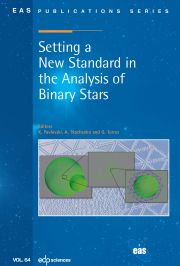Article contents
An introduction to interferometry
Published online by Cambridge University Press: 31 January 2003
Abstract
In this paper I provide a brief introduction to astronomicalinterferometry at optical and infrared wavelengths. Two key concepts,central to understanding the basis and practice of interferometry areintroduced: image formation with conventional telescopes, inparticular the Fourier decomposition of images, and the nature andutility of measurements of the coherence function or mutual intensity.Thereafter I focus on optical/infrared interferometry, outlining howmeasurements of the coherence function are made at these wavelengths,how they can be used to interpret a source's structure, and what theprinciples of interferometric imaging tell us about the limitationsexpected for the current generation of arrays such as the VLTI.
Information
- Type
- Research Article
- Information
- Copyright
- © EAS, EDP Sciences, 2003
- 1
- Cited by

